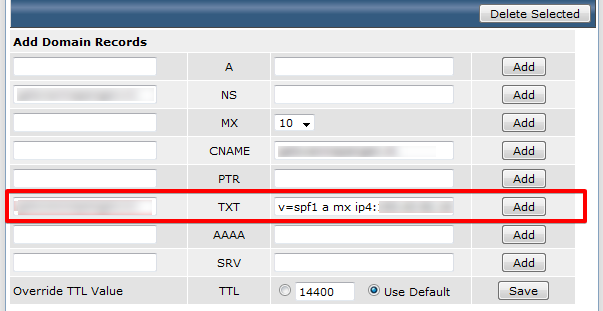Create Spf Record Microsoft Dns Server

How to configure Sender of Policy Framework records in the. To configure SPF records in the Windows Server 2003 DNS. And then click Create Record. DNS and SPF configuration for Microsoft. (The SPF record was generated using Microsoft's. Then you need to add the MX and SPF records to your public DNS servers. Mar 28, 2017 Describes how to configure Sender of Policy Framework (SPF) records in Windows Server 2003 Domain Name System. And then click Create Record. Deploy SPF in Windows DNS Server. (TXT) record type and click the 'Create Record. If your domain is hosted by Bind DNS server, you can add SPF record.
Common mistakes when creating an SPF record SPF records can be quite simple ( v=spf1 a -all), but they can also be rather complex, to account for the multitude of different outgoing mail server configurations that exist on the Internet. Newcomers to SPF often seem to make similar mistakes when creating their first SPF record. In general you should: • • • • • • • • • • • • • • Begin by making a list of your mail servers The purpose of SPF is to advertise your domain's mail servers.

It often helps to make a list before starting. Consider whether any of the following are used to send mail: • web server • in-office mail server (e.g., Microsoft Exchange) • your ISP's mail server • mail server of your end users' home ISP • any other mail server Only the final mail server is relevant. If your company has a more complicated setup where an internal mail server routes mail through an outgoing mail server for delivery to the world, only the outgoing mail server would be listed in SPF. Note: at one point in time, AOL would capture outgoing SMTP (port 25) traffic from its users and transparently intercept and re-route the message through AOL's outgoing mail servers. Thus any AOL users would end up sending mail through AOL's mail servers whether they wanted to or not.
Using an alternate port such as port 587 may work to get around this if your hosting company supports it. Create a list of your Chances are you have more than just one. Domains that are not used by you could still be abused by spammers!
Also see List a server only once Ultimately, SPF lookups resolve to an IP address. It is not necessary to list the same server using multiple host names (e.g., 'example.com' and 'www.example.com' which both resolve to the same IP). In fact doing so is a bit harder on your DNS servers since a receiving server progressing through your record may be forced to make multiple DNS lookups, when simply referencing the server hostname once would have been sufficient. If the server's IP rarely changes, consider using the ip4:x.x.x.x (or ip6) notation so recipients can avoid DNS lookups entirely.
Since there is a limit of 10 DNS lookups per SPF record, specifying an IP address or address range is preferable for long lists of outgoing mail servers. Often an SPF record can be condensed down to something like v=spf1 ip4:x.x.x. Dissidia 012 Duodecim Final Fantasy Original Soundtrack Torrent Download Colonna Sonora Il Padrino. on this page. x -all if there is only one outgoing mail server. Only list outgoing mail servers SPF's purpose is to publish a list of outgoing mail servers. Any servers that do not deliver mail to the world, such as web servers or incoming-only mail servers, should not be listed. Only use 'mx' if your MX servers are used for outgoing mail Sometimes when using configuration aids it is easy to add the mx mechanism. However MX records are used to route incoming mail for your organisation, and the same server(s) may or may not be used for your outgoing mail.
If the IP address of your outgoing server is covered by an a, ip4, or other mechanism, it is not necessary to reference that server again using the mx mechanism (see above). If the servers listed in your MX records are only used for incoming mail, it is not necessary to use the mx mechanism. Use 'mx' with domain names, not mailserver names Specifying mx:mailserver.example.com is generally incorrect, unless you truly want SPF validation to look up all the hosts that accept mail for the 'mailserver.example.com' domain. (Usually, there will not be any such hosts, because 'mailserver.example.com' is itself a host, not a domain.) This will not show up as a syntax error, however, it will simply not match anything. The correct usage for validating against the MX records for 'example.com' is mx:example.com, or if you want to specify a particular mail server's hostname or IP, a:mailserver.example.com or ip4: x.x.x.x. Finally, note that when your SPF rule is stored as a DNS record associated with 'example.com', then 'example.com' is the default domain for the rule, so mx on its own (with no explicit domain specified) is sufficient to check the sender IP against all the MX mail hosts listed for 'example.com', in that context.